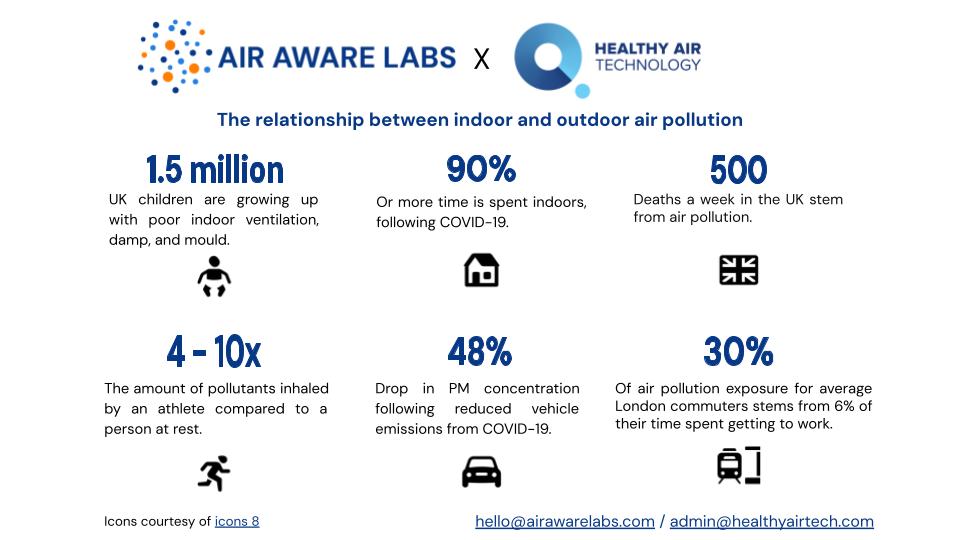
The Air We Breathe: Understanding and Tackling Indoor and Outdoor Air Pollution
16 July 2025
Air pollution is a leading environmental health risk, contributing to an estimated seven million premature deaths globally each year, with over 30,000 UK deaths a year – over 500 deaths every week. Its impacts extend to every organ in the body, with strong associations to heart disease, respiratory conditions such as asthma and COPD, cognitive decline, mental health disorders, cancers, and adverse maternal outcomes. While traditionally viewed as distinct, the boundary between indoor and outdoor air pollution is increasingly blurred. Studies show that outdoor pollution frequently infiltrates indoor spaces, with fine particulate matter (PM2.5) levels indoors often mirroring those outside – challenging the perception that staying indoors offers protection.
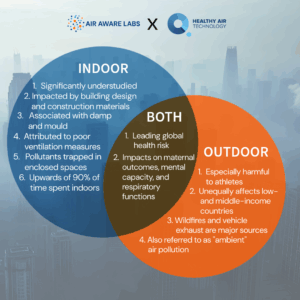
Indoor vs outdoor air pollution
Outdoor air quality is a key factor in human health. Significant contributors of air pollution include home energy sources, emissions such as from agricultural, transport, and industrial sectors and natural phenomena like dust storms and wildfires. Most direct exposure to pollutants is through the respiratory system, although exposure can occur through the eye conjunctiva. These pollutants have the ability to travel deep within the bloodstream and into the heart and lungs. The liver, working to filter blood toxins, is also affected by the build-up of substances found in PM2.5.
What’s polluting our outdoor air?
Regardless of whether you live in an urban or rural environment, you are affected by outdoor air quality. It’s estimated that 99% of the global population breathe air that exceeds WHO guideline limits, inhaling particulate matter, nitrogen dioxide, and ozone. Especially susceptible are those with underlying conditions, children, the elderly, and athletes. Increased respiration by athletes leads them to inhale between 4 and 10 times the amount of pollutants as an individual at rest. Children’s brain development is complicated by chronic exposure to air pollutants, leaving them more likely to develop mental disorders later in life, and perform comparatively poorer on cognitive tasks.
Vulnerable populations and hidden health risks
As outdoor air quality continues to deteriorate in many parts of the world due to climate change, industrial expansion, and insufficient regulatory enforcement, the health consequences are likely to intensify. The COVID-19 pandemic highlighted the elevated concentration of ultrafine particles and the poor state of air quality as a whole. A 51% decrease in highway traffic volume and 39% decrease in local traffic volume near Boston, MA corresponded with a 48% drop in particle number concentration. In London specifically, the average resident spends 6% of their time commuting, yet this accounts for 30% of their air pollution exposure. As further research is conducted, new mitigation measures must be introduced to curb both outdoor and indoor air pollution.
Covid 19: A glimpse into cleaner air
Indoor air quality plays a critical but often underestimated role in overall health. In the post-COVID era, with more people working remotely and spending upwards of 90% of their time indoors, the quality of indoor environments has become a significant public health concern. Indoor spaces are influenced by everyday activities and building design.
Indoor air pollution
Common sources of indoor air pollution include cooking, cleaning, heating, furniture, building materials, and inadequate ventilation. In tightly sealed or poorly ventilated spaces, these pollutants can accumulate to levels that exceed those found outdoors. More than 1.5 million children in the UK are growing up in homes with poor ventilation, harmful levels of indoor pollution, damp, and mould. Such conditions are strongly associated with respiratory issues, and evidence increasingly points to indoor air pollutants as key triggers for asthma exacerbation and other respiratory illnesses.
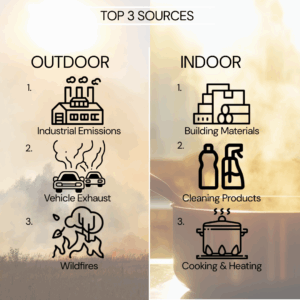
Why indoor air deserves more attention
Despite these risks, indoor air pollution remains under-recognised in public health policy. International health organisations now argue that improving indoor air should be a global priority, particularly in residential settings, schools, and workplaces, where long-term exposure can have cumulative health effects. More indoor air quality initiatives, research and funding are beginning to emerge – a positive change in this space.
Towards cleaner air: Innovations and partnerships
Whether indoors or outdoors, air pollution is a persistent but preventable threat to public health. Its links to chronic disease, cognitive decline, and premature death are well-established, yet its presence in daily life remains. Outdoor pollution from traffic, industry, and agriculture is a major concern, but indoor environments, where people spend the majority of their time, can harbour equally harmful pollutants from common activities and poor ventilation. Compounding the issue, outdoor pollutants frequently penetrate indoor spaces, diminishing the protective value of being inside, and indoor pollution sources such as wood burning can impact outdoor pollution levels. Improving air quality requires coordinated attention to both environments. By increasing awareness, investing in clean air technologies, and adopting evidence-based practices, we can reduce exposure and make clean air a priority in every setting.
Healthy Air Technology – Air purification solutions for indoor environments
Healthy Air Technology engineers scientific indoor air quality solutions. Our multi-patented DNO technology eliminates harmful particles, as small as 0.003 microns, without producing secondary pollutants. This includes particulate matter (PM2.5), nitrogen oxides (NOx), sulphur oxides (SOx), ozone, bacteria, and viruses. Our products have been endorsed by Singapore’s National Environment Agency to combat COVID-19. Through research-backed innovation, we are proud to work alongside Air Aware Labs to aspire towards healthy air for all – both indoors and out.
Air Aware Labs – Personalising air quality, for everyone with AirTrack
Air Aware Labs works to provide accessible, personalised air quality data for everyone. We labour to transform how people interact with the air around them, inviting the change of unhealthy behaviors via the AirTrack app. AirTrack allows you to track real-time pollution levels, compare them to baseline health standards, optimise your workouts, and preserve your long-term health. Air Aware Labs is committed to highlighting the importance of high quality air and champions solutions that reduce pollutant exposure. We are proud to partner with Healthy Air Technology in their pursuit to supply advanced indoor air purification solutions.
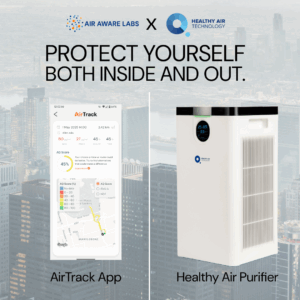
Collaborative post written by Sophie Ansell from Healthy Air Technology and Anika Pruntel, overseen by Lía Budnik from Air Aware Labs
Latest News

The Hidden Risk of Clean Air: Secondary Pollution from Air Purifiers
When most people think of improving indoor air quality, air purifiers often come to mind as a simple…
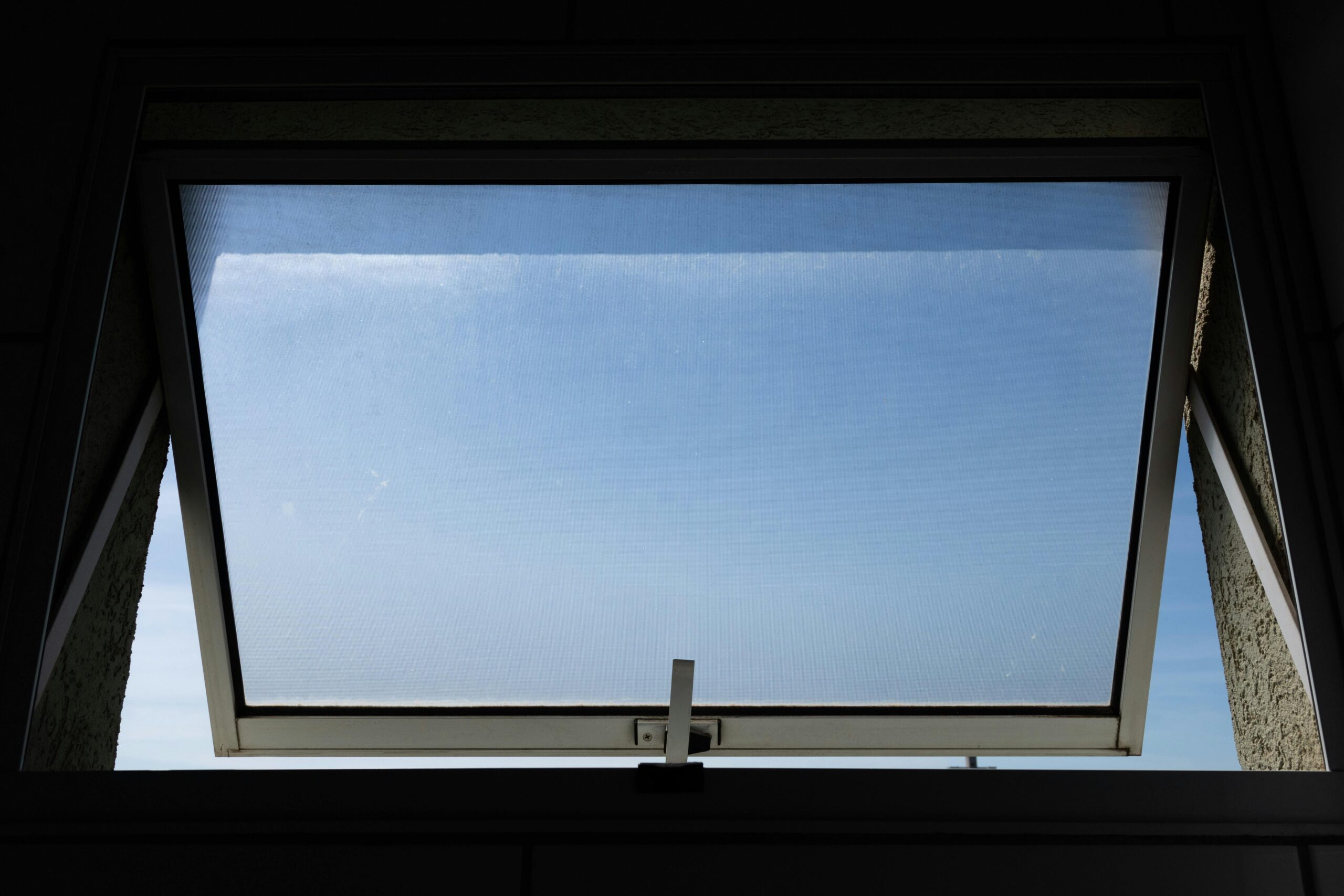
Why Clean Indoor Air Matters More Than Ever And How to Achieve It
In the UK, we spend about 90% of our time indoors – at home, at work, or in…

Light, Air, and Mood: How Our Environments Shape Energy in Autumn
As the days grow shorter, many of us notice a shift in energy, mood, and focus. Less daylight…

